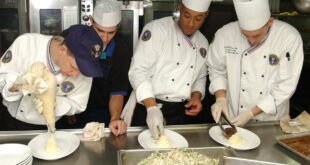The Amazing World of Food Culture
One of the things that make traveling so exciting is trying all the different kinds of food that different cultures have to offer. Each region, country, and even town seems to have its own traditional foods and culinary customs that are exciting to discover. It’s truly amazing how food culture can be both a reflection and an expression of a society’s history, traditions, beliefs, and everyday life.
Cultural Clues in Cuisine
While we might not realize it, our culture strongly influences the way we feel about food. For example, in some regions, meats and starchy foods are the key components of a traditional meal, while in other places, meals typically feature vegetables, grains, or seafood. Certain cultures value strong, bold flavors and spices that might overwhelm others, while some countries treat their meals like a social occasion and emphasize the importance of celebrating with family and friends.
The Unique Food Cultures around the World
From spicy street food in Thailand to traditionally European cuisine, the world is full of exciting food experiences that excite the senses, challenge the palate and provide us insight into the traditional values of different societies. India is renowned for its spices, and a wide variety of dishes featuring rice or flatbread serve as staples for most of the country. In China, the cuisine varies greatly from place to place according to local ingredients and preferences. For example, Szechuan cuisine is famous for being deliciously spicy while Cantonese typically features fresh ingredients with a little bit of sweetness.
Fusion Cuisine
Fusion cuisine refers to cooking that combines elements of two cuisines from different cultures. This identity in food culture typically happens when people use ingredients from a culture they are familiar with when making others from cultures that have cross-fertilized cooking trends. The same is true when cuisines mix through migration and trade processes. For example, many Brazilians enjoy feijoada, a dish of black beans, beef, and pork that is a dish of mixed African, Indigenous, and European influences that was honed during Brazil’s colonial period. Similarly, most nuevo Latino cuisine uses a spread of twists- original Hispanic flavors with Asian and fruity differences to add flair to new cuisines across the Americas.
The Eclectic Approach to Food Culture
Traveling enthusiasts argue that as, food culture evolves, so should be the means you approach it. A modern and low-bar way to virtually expand your food horizons is by paying attention to an influx in the sophistication and variety of street food on a summertime night market or through digital cooking blogs and identities that pop off social media. Or, you can visit food festivals to sample just about any existing culinary invention, uniting strangers to discuss creative ways different communities cook diverse types of ingredients.
In conclusion
Regardless of soulful connections or cultural recognition with any peculiar kind of dish, sharing food can now satisfy platonic or emotional tastes across departures and distances, widening any travel repertoire. Indeed, the world of food culture grants us an opportunity to embrace a variety of relations and memories that differ in the effects they have on us, sustenance for both body and soul.
 Mind Uncharted Explore. Discover. Learn.
Mind Uncharted Explore. Discover. Learn.



